White charcoal, also known as Binchotan, is considered one of the most premium charcoal types in the market. Applied the Japanese technology, Binchotan delivers the best grilling experiences due to its smokeless and odorless feature.
It has a distinctive white color with high heat output. What’s more, this type of charcoal is very popular in the Korean and Japanese markets.
Discover the Binchotan white charcoal, as well as the unique craftsmanship involved in PNP Charcoal’s production. This article will describe how Binchotan white charcoal is different, specifically because it’s known for longevity and purity, while also looking into PNP Charcoal’s skills in manufacturing and logistics that improve its quality. Dig deeper into PNP Charcoal’s dedication to being a world-class charcoal supplier, thereby influencing Vietnam’s and global trends on charcoal.

White Charcoal, commonly known as Binchotan, is a premium-grade charcoal traditionally crafted in Japan through a specialized high-temperature carbonization process. Typically made from dense hardwoods like Ubame oak, Binchotan is heated at temperatures above 1000°C and rapidly cooled, producing a distinctive white surface. Unlike regular charcoal (black charcoal), Binchotan offers exceptional purity, burns at higher temperatures for longer durations (up to 3-5 hours), and generates minimal smoke and virtually no odor.
These unique characteristics make it the preferred choice for professional grilling, premium restaurants, air purification, and water filtration, underscoring its growing popularity among chefs, health-conscious households, and environmentally-minded consumers worldwide.

The distinctive color, dense structure, and chemical makeup of white charcoal or Binchotan have been attributed to its great performance and diverse usages.

The various forms of white charcoal exhibit distinct characteristics and manufacturing techniques. Among these types, Binchotan enjoys the highest reputation although others also have their unique features.
Binchotan is a traditional Japanese white charcoal that has an admirable quality and is produced painstakingly. It is primarily derived from the Ubame oak tree, which goes through a complex series of processes to produce it: low-temperature heating, high-temperature firing, followed by rapid cooling. As a result, the charcoal comes out hard and dense with a smooth white surface that has high levels of carbon content.

In Vietnam, white charcoal is often referred to as Binchotan, though it differs from the traditional Japanese version despite its similar appearance. Vietnamese white charcoal is typically produced from local hardwoods such as lychee, coffee wood, rather than the ubame oak commonly used in Japan.
While the fundamental production techniques share some similarities, variations in the manufacturing process lead to differences in density, burn duration, and heat retention compared to authentic Japanese Binchotan. Some Vietnamese producers have adopted Japanese charcoal-making technology, but the distinction remains in the use of locally sourced wood and the unique species available in Vietnam.
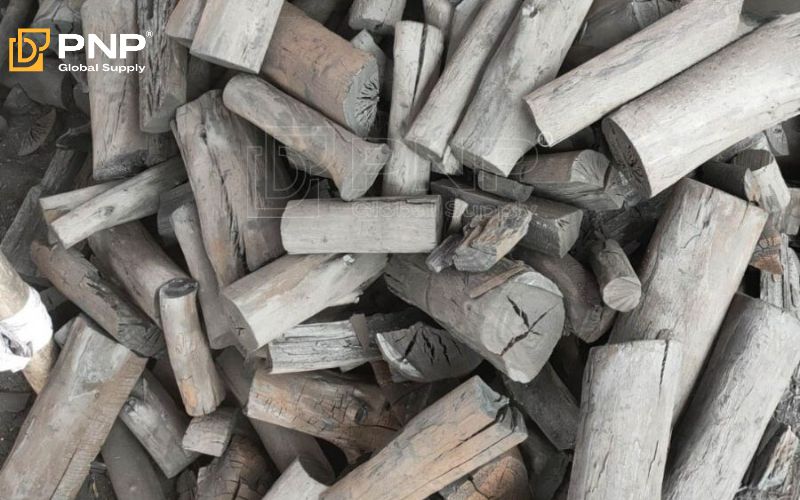
Worldwide production of different varieties of white charcoal is based on specific local materials and methods. For instance, different regions utilize hardwoods like oak, mangrove, chrysanthemum, Maitiew, lychee longan, eucalyptus, coffee, and Konia, each imparting distinct density, burn time, and heat retention characteristics.
Among them, the three most common types of white charcoal in Vietnam are Lychee longan, Coffee, and Eucalyptus.
Its production process is more complex than regular black charcoal and involves the following key steps:

By following this meticulous process, PNP Charcoal provides customers with premium-quality White Charcoal, ideal for grilling, culinary applications, water purification, and air filtering, appreciated globally by environmentally conscious consumers and professional chefs alike.
White charcoal’s exceptional quality is derived from its meticulous production process, resulting in high carbon content and dense structure. This ensures a clean, efficient burn with minimal smoke and ash production, making it superior to standard charcoal.
The hardness and density of Binchotan charcoal significantly enhance its durability. Its robust structure ensures it maintains integrity throughout burning, resisting crumbling and allowing repeated usage or repurposing for filtration and purification.
Binchotan charcoal is famous for generating high, consistent heat, perfect for precision cooking and grilling. Its dense carbon structure maintains stable temperatures for extended periods, often up to 4 hours, significantly longer than standard charcoal.
Binchotan charcoal’s distinctive white or silvery grey surface provides unique visual appeal. In culinary presentations and decorative contexts, its sophisticated appearance enhances visual presentation, adding a touch of elegance and style to dining and decor.
Thanks to its highly porous structure, white charcoal excels at absorbing odors and impurities, making it excellent for air and water purification. This feature is widely appreciated in both domestic and commercial settings, contributing to cleaner, healthier environments.
Binchotan charcoal production prioritizes environmental sustainability, employing responsibly sourced hardwoods and eco-friendly carbonization methods. This sustainable approach minimizes environmental impact, promotes responsible forestry, and aligns with global trends toward environmentally conscious lifestyles.
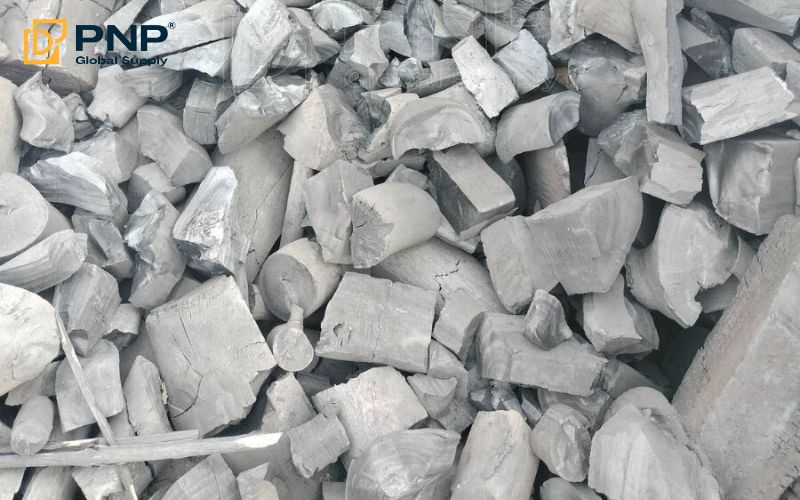
If you are looking for other unique natural products, you can find out more at:
Despite the numerous advantages that come with the use of white charcoal, some limitations affect its accessibility and application. Some major considerations include its price, rarity, and technical complexity in the production process.
The specialized production process and high-quality materials for manufacturing white charcoal make it more expensive than other types of charcoal. This higher price can be a barrier for potential users thereby limiting its universal application.
In countries such as Japan and Vietnam where most people consume white charcoal, it is difficult to find in other regions. This poses a challenge for many consumers who want to purchase these products regularly.
To produce white charcoal, one needs an intricate technology-based approach involving low-temperature carbonization coupled with high-temperature firing methods. The complexity increases both costs as well as necessitates specific equipment and expertise.
| Criteria | White Charcoal (Binchotan) | Black Charcoal |
| Production Method | High-temperature carbonization, rapid cooling | Traditional carbonization |
| Smoke and Odor | Virtually smoke-free, odorless | Produces moderate smoke, mild odor |
| Heat Generation | High, stable, and consistent heat output | Lower heat, less consistent |
| Burning Duration | 3-4hours | 3-4 hours |
| Density & Durability | Very dense and durable | Less dense, crumbles easily |
| Environmental Impact | Eco-friendly, sustainable production | Less sustainable |
| Applications | Premium grilling, air/water purification, skincare | General grilling purposes |
| Price | Higher (premium quality) | Lower (standard quality) |
The use of white charcoal in barbecues and grills is widespread due to its consistent high heat generation and minimal smoke production, greatly enhancing food flavor. Its durability and combustibility make it ideal for precise high-temperature cooking and accurate temperature control.
White charcoal (Binchotan) can be reused multiple times. In barbecue restaurants, after customers finish grilling, the used charcoal is carefully extinguished and stored. Later, it is reignited and provided for reuse, maximizing efficiency and sustainability.
Thanks to its unique porous structure, Binchotan charcoal effectively absorbs odors and impurities. It is extensively used in various applications, including household air purification, refrigeration odor control, and water filtration systems, significantly improving the overall quality of life.
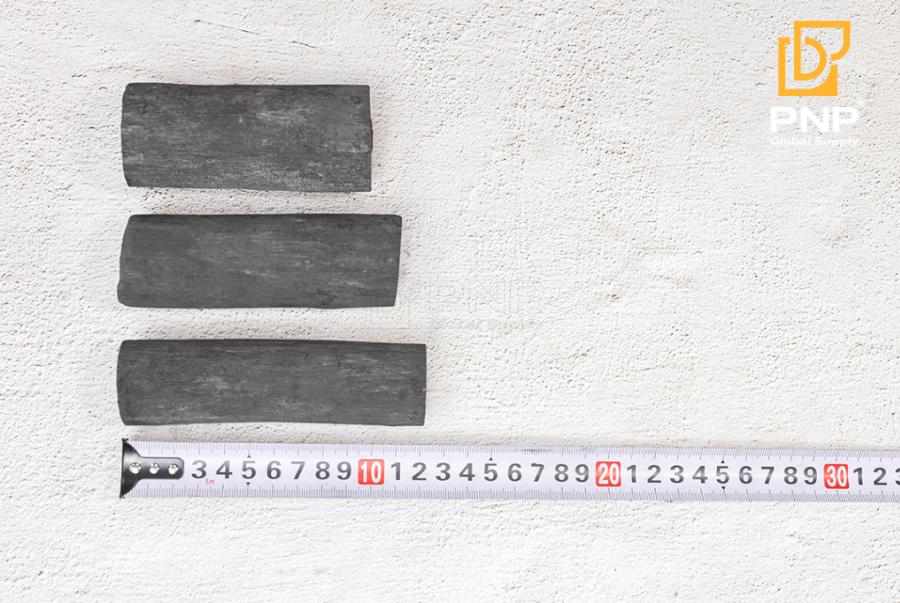
Binchotan white charcoal is valuable across multiple industries, primarily for air and water purification due to its exceptional adsorption properties. Additionally, its high carbon content and porosity make it beneficial in certain manufacturing processes and essential in various filtration products.
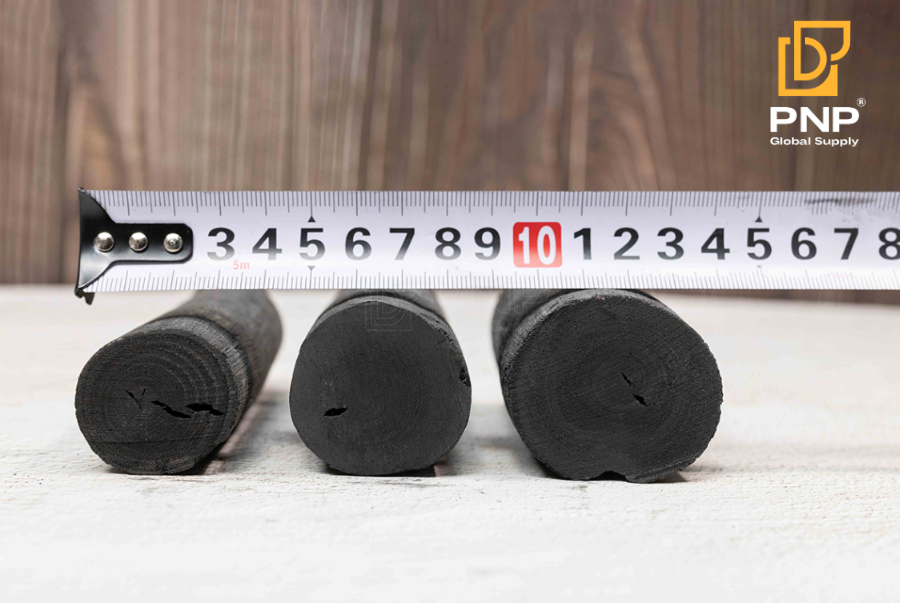
PNP Charcoal proudly offers premium-quality Binchotan white charcoal, sourced responsibly from carefully selected hardwoods and produced through sustainable, eco-friendly methods.
Our precision-driven production process results in exceptional hardness, superior heat retention, and a clean, smoke-free burn, making our charcoal ideal for both culinary and industrial applications.
What sets us apart is our commitment to consistency, reliability, and customer satisfaction. By leveraging Japanese white charcoal production technology, we ensure high carbon purity, extended burn time, and minimal smoke output. Whether you’re a restaurant, BBQ professional, or eco-conscious consumer, PNP Charcoal delivers the premium quality and performance you can trust.
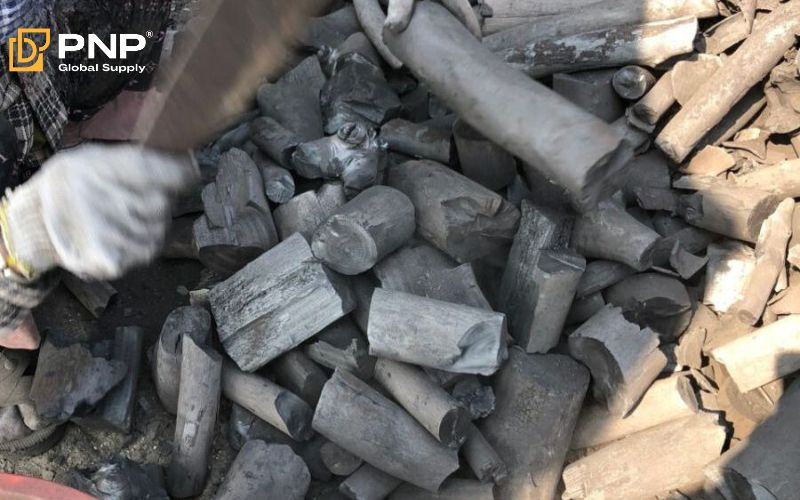
White charcoal (Binchotan) stands out as a premium choice due to its exceptional features, including high heat generation, long-lasting burn, smoke-free combustion, and eco-friendly production. Its remarkable durability, aesthetic appeal, and diverse applications in cooking, air purification, and industrial filtration make it a versatile and valuable product. Experience the outstanding benefits of White Charcoal today. For expert advice, additional information, or to place your order, please contact us directly via our website, hotline, or inquiry form. Choose PNP Charcoal for guaranteed quality, sustainability, and superior customer support.
Answer: White charcoal is carbonized at 1,200°C (vs. 600°C for regular charcoal), creating a pure, smokeless burn. Its ultra-high density and 98% carbon content justify the premium price. Ideal for gourmet cooking and health applications.
Answer: Yes, Binchotan emits zero smoke and minimal odor due to its complete combustion. Its smokeless nature and low CO emissions make it safe for indoor yakitori grills, tea ceremonies, or even air purification.
Answer: Extinguish Binchotan by submerging it in sand (not water) after use. High-quality Binchotan can be reused 3-4 times for grilling or repurposed as a deodorizer, water purifier, or humidity regulator.
Answer: Binchotan’s microporous structure absorbs impurities, reducing carcinogens in grilled food. It also emits far-infrared rays for even cooking, retains nutrients, and releases negative ions to purify the air—ideal for allergy-sensitive households.
Answer: Binchotan’s intense, steady heat (1,000°C+) sears meat instantly, locking in juices while imparting a subtle umami flavor. Its smokeless burn ensures the delicate taste of yakitori, sushi, or wagyu remains uncompromised—a hallmark of authentic Japanese grilling.
In conclusion, Binchotan white charcoal is the best choice for selective consumers who locate the most effective fuel source that is environmentally friendly and efficient due to its high purity and durability in its burning. The exceptional quality of this product is matched by PNP Charcoal’s total commitment to excellence in production and service provision. People needing superior Binchotan whitish charcoal with incomparable customer support may contact PNP Charcoal, which avails expert guidance as well as devoted assistance that covers all your charcoal requirements. Be part of PNP Charcoal’s commitment to quality and customer satisfaction firsthand by getting in touch with them today.
After receiving the full payment, PNP will do the Telex release immediately.
1. How can I know the price of this product?
Thank you for your interest! Just tell us the quantity of White charcoal you need via one of the buttons on the right!
2. Where do you ship this product to?
PNP Global Supply has a strong background in Logistics, therefore, we have 8 years of experience in exporting commodities to Asian, European, and Oceanic countries. Just place your order and we will ship our products to you!
3. Can I have some samples of this product?
We would love to! Just leave us your contact information and the type of charcoal you want in our mail or WhatsApp, and our team will start sending you samples as soon as possible!
